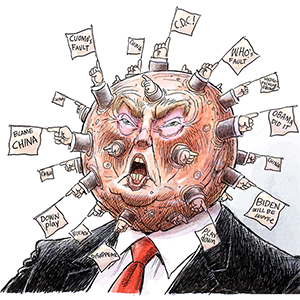Huawei's new Mate 70 phone shows its chip advances are stalling
Published in Science & Technology News
Huawei Technologies Co.’s latest flagship smartphone is powered by a chip little different from the one that set off alarm bells in Washington a year ago, signaling a slowdown in the Chinese company’s tech advances.
The newly introduced Mate 70 Pro Plus phone runs on a processor built with the same 7-nanometer technology used in its Mate 60 Pro last year, according to a teardown of the device by researchers at TechInsights. The chip, Kirin 9020, is designed by Huawei and once again produced by Shanghai’s Semiconductor Manufacturing International Corp.
There had been reports that Huawei would progress to the more advanced 5nm technology as soon as this year, raising concerns in Washington that its attempts to constrain China’s tech industry were failing. Huawei itself doesn’t disclose details of its chip technology.
“While early rumors pointed to the inclusion of the Kirin 9100 chipset fabbed using a 5nm process, the Mate 70 Pro+ instead houses the Kirin 9020, fabricated by SMIC on a 7nm process node,” TechInsights said in its analysis of the device.
This means Huawei is still about five years behind the industry leader, Taiwan Semiconductor Manufacturing Co., in terms of its technology. TSMC first came out with a 7nm chip in 2018, and released a second iteration of the product in 2019.
Huawei stunned the tech industry a year ago when it unveiled the Mate 60 Pro, powered by a semiconductor much more advanced than U.S. officials thought possible after strict export controls. Huawei’s announcement coincided with a trip to China by U.S. Commerce Secretary Gina Raimondo, the point person for enforcing American restrictions on the trade in technology.
Yet Huawei’s push for additional breakthroughs has run into challenges. The Shenzhen-based company is unlikely to move past 7nm technology until at least 2026 as it seeks more powerful silicon for smartphones and artificial intelligence, Bloomberg News reported in November. Chipmaking partner SMIC, which is prohibited from buying the most advanced chip-making machines from ASML Holding NV, is dealing with poor yield and reliability issues with its current technology, clouding the prospects for moving to more advanced production nodes.
Huawei has made some incremental progress with the Mate 70 Pro phone. In its teardown, TechInsights found that the processor, while made with the same SMIC 7nm+2 process technology, has a modified circuit floorplan aimed at boosting performance and efficiency. The chip’s die is also 15% larger than last year’s model. Still, Huawei’s current chip technology is not as good as that introduced by TSMC five years ago, when it first used ASML’s extreme ultraviolet, or EUV, production technology, TechInsights said.
“Compared to 2019’s processor design in TSMC 7nm EUV, it would be slower, burn more power, and have lower yield,” said Alexandra Noguera, circuit analyst at TechInsights. “However, the redesign and learning would make this chip perform better than last year’s.”
Huawei and SMIC are considered China’s strongest hope for advanced indigenous chipmaking, yet they appear likely to fall further behind next year when TSMC and Samsung Electronics Co. begin mass production at 2nm. The most advanced chips are used to power Apple Inc.’s iPhones and Nvidia Corp.’s AI chips.
For smartphone tasks, Huawei’s semiconductors have shown themselves more than adequate. Last year’s Mate 60 surprised consumers with its smooth performance and brought Huawei back as a contender in China’s premium-tier market. The company retains significant expertise in camera technology and is rolling out its next-generation operating system, HarmonyOS Next, without any of Alphabet Inc.’s Google or Android software.
The need for more advanced chipmaking is much more pressing with AI accelerators, where Huawei aims to compete with Nvidia as the provider of computing power for software developers in China. With Nvidia now operating an annual upgrade cycle of its chip technology, the performance gap between its products and China’s alternatives is likely to grow.
©2024 Bloomberg L.P. Visit bloomberg.com. Distributed by Tribune Content Agency, LLC.







Comments